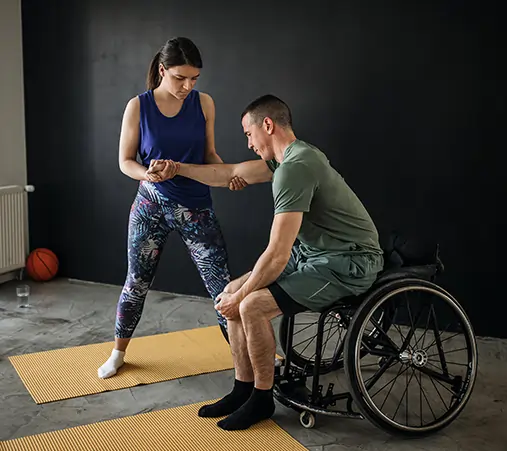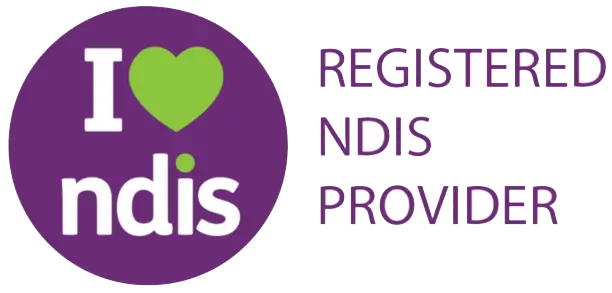The National Disability Insurance Scheme (NDIS) was designed to support Australians with disabilities in leading more independent and fulfilling lives. One of the vital components of this initiative is the NDIS Community Participation, which aims to assist individuals in integrating with their communities, engaging in social activities, and fostering personal growth and confidence. This guide provides an in-depth look into NDIS Community Participation, explaining how it works, its benefits, eligibility, how to access the funding, and how participants can make the most of it.
What is NDIS Community Participation?
NDIS Community Participation is a funded support category that enables individuals with disabilities to engage in social and recreational activities within their community. This support is provided under the broader goal of Improved Daily Living or Capacity Building Supports, and it focuses on fostering inclusion and active involvement in community life.
The objective is to ensure that participants have access to opportunities that contribute to personal development, building relationships, learning new skills, and participating in activities that align with their interests and goals.
Key Points:
- Social Inclusion: Participants are encouraged to take part in events and activities that they enjoy, such as joining local clubs, attending community events, or engaging in hobbies.
- Skill Development: The program also supports individuals in learning new skills that promote independence and social integration.
- Personal Development: Through these activities, participants often experience enhanced self-confidence, better mental health, and a stronger sense of belonging.
Importance of Community Participation for People with Disabilities
Community participation plays a significant role in the overall well-being of people with disabilities. It extends far beyond mere engagement in social activities—it fosters mental, emotional, and physical growth. Here’s why it’s crucial:
Social Connectedness
Many individuals with disabilities face isolation due to physical, communication, or social barriers. Community participation helps bridge that gap by offering a space where they can interact with others, share experiences, and build lasting friendships.
Mental Health and Well-being
Engaging in social activities can positively affect mental health by reducing feelings of loneliness and anxiety. Being part of a community can lead to a greater sense of purpose, belonging, and self-worth, contributing to improved emotional resilience.
Skill Development and Independence
Community participation often involves learning new skills that can contribute to a participant’s personal and professional growth. Whether it’s improving social interaction skills, developing hobbies, or learning how to navigate public spaces independently, these experiences promote a higher level of autonomy.
Confidence and Self-Esteem
Achieving personal goals, interacting with others, and successfully participating in group activities all contribute to a sense of accomplishment. This, in turn, enhances confidence and self-esteem, encouraging participants to push their limits and explore more challenging opportunities.
Broader Community Benefits
When individuals with disabilities actively participate in their communities, it fosters inclusivity and breaks down societal barriers. It promotes understanding and awareness, helping the broader community recognize and appreciate the contributions of people with disabilities.
Eligibility for NDIS Community Participation Funding
Eligibility for community participation funding is determined by the National Disability Insurance Agency (NDIA) based on an individual’s specific needs and goals outlined in their NDIS plan. To be eligible:
- NDIS Participant: The individual must be registered as a participant under the NDIS.
- Specific Goals: The participant must have goals related to social, community, or recreational engagement outlined in their NDIS plan. These goals can focus on social inclusion, personal development, or skill-building.
- Demonstrated Need: The NDIA must recognize that community participation is an essential component of the participant’s well-being and development. This is assessed through the planning process.
Examples of Participants Who May Be Eligible:
- A young adult with autism who wants to develop social skills by joining a local hobby group.
- An individual with cerebral palsy who requires assistance to attend community events and engage with peers.
- A person with intellectual disabilities who wants to learn how to participate in sports and group activities.
What Types of Activities are Covered?
NDIS Community Participation funding is highly flexible and can cover a wide range of activities, depending on the participant’s goals and interests. Here are some categories of activities that can be supported:
Social Activities
- Joining Clubs or Groups: Funding can be used to facilitate joining local clubs (e.g., book clubs, art groups, or gardening groups) where participants can meet new people and explore their interests.
- Attending Events: This can include attending community festivals, cultural events, or social gatherings that foster a sense of belonging.
Recreational Activities
- Sports and Physical Activities: Funding can support participation in sporting activities such as swimming, tennis, or yoga. These activities not only promote physical well-being but also encourage teamwork and social interaction.
- Hobbies: Whether it’s photography, painting, or cooking classes, NDIS funding can help participants engage in hobbies that bring joy and satisfaction.
Skill Development Programs
- Workshops: Programs that teach specific skills, such as communication workshops, IT skills, or creative arts, are eligible for funding.
- Volunteer Work: For those who want to contribute to their community, volunteer programs are a great way to develop new skills while making a meaningful contribution.
Daily Life Activities
- Shopping and Errands: Participants can receive support to engage in everyday activities like shopping, dining out, or running errands, which can help them develop independence in their daily lives.
- Learning Public Transport: For individuals who want to increase their mobility, NDIS can fund training programs that teach how to use public transport confidently and safely.
How to Access NDIS Community Participation Funding
Accessing NDIS Community Participation funding is a straightforward process that begins with your NDIS planning meeting. Here are the key steps:
Preparation for the NDIS Planning Meeting
To increase your chances of securing community participation funding, it’s essential to clearly outline how engaging in social and community activities will help you achieve your goals. This can include:
- Discussing your hobbies and interests.
- Demonstrating how these activities will contribute to skill development or personal growth.
- Providing examples of specific community activities you’d like to participate in.
Incorporating Goals into Your Plan
During your planning meeting, make sure to discuss your social and community participation goals in detail. Be specific about the types of activities you want to pursue and how these align with your personal development objectives.
NDIA Assessment
The NDIA will assess your plan and determine if community participation is a suitable category of support for you. They will look at factors such as your current level of community engagement, barriers to participation, and how funding can help remove these barriers.
Receiving Funding
Once approved, your NDIS plan will include a budget allocated for community participation. You can then use this funding to access the services and activities that align with your goals.
Choosing the Right Service Providers
Selecting the right service providers is crucial for making the most of your community participation funding. Here are some tips to help you choose:
Registered vs. Non-Registered Providers
While NDIS allows participants to use both registered and non-registered providers, using a registered provider can offer added security as these organisations meet the NDIA’s quality and safety standards.
Reputation and Experience
Look for service providers that have experience working with NDIS participants. You can research reviews, ask for recommendations, or check the provider’s track record in delivering quality support services.
Tailored Support
Every participant has unique needs. Choose a provider who is flexible and able to tailor their services to align with your specific goals and requirements. They should be willing to listen to your preferences and adjust their programs accordingly.
Building Relationships
It’s important to feel comfortable with your service provider. Building a good relationship ensures that you feel supported and confident in participating in community activities.
How to Make the Most of Your NDIS Community Participation Funding
Once you have your funding, it’s essential to use it in ways that maximise the benefits. Here are some strategies:
Set Clear Goals
At the beginning of your plan, set specific, measurable goals for what you want to achieve with your community participation funding. For example, your goal might be to join a hobby group, improve your social skills, or attend a certain number of events each month.
Plan Regular Activities
Instead of using your funding sporadically, plan regular activities that keep you engaged and consistently moving toward your goals. A structured approach can help maintain progress and avoid gaps in participation.
Explore New Opportunities
Don’t be afraid to try new things! Community participation is a chance to explore activities outside of your comfort zone. Whether it’s trying a new sport, learning a new craft, or joining a volunteer group, embrace the opportunity for growth.
Monitor Your Progress
Keep track of your achievements and experiences. This can help you reflect on your progress and identify areas for improvement. Regular monitoring will also be beneficial when it’s time to review your NDIS plan, as you’ll have evidence of how community participation has contributed to your personal growth.
Common Challenges and How to Overcome Them
While NDIS Community Participation offers great benefits, some participants may encounter challenges. Here’s how to tackle common obstacles:
Finding Suitable Activities
Some participants may struggle to find activities that match their interests or goals. In such cases, working with your service provider or local community groups can help identify new opportunities.
Transportation Barriers
Many participants face difficulties getting to and from activities. To overcome this, consider using your NDIS funding for transportation support or exploring accessible transport options in your area.
Social Anxiety or Lack of Confidence
It’s normal for participants to feel anxious when trying new activities or meeting new people. A gradual approach can help ease these concerns—start with smaller, low-pressure activities and work your way up to more challenging experiences.
Budget Management
Managing your funding effectively is crucial to ensure you can participate in activities throughout the entire year. Keep track of your spending and work with your support coordinator to ensure your budget is used efficiently.
Real-Life Success Stories
Here are a few examples of how NDIS Community Participation has positively impacted the lives of participants:
John’s Story: Overcoming Isolation
John, a 32-year-old man with intellectual disabilities, felt isolated after completing school. With the help of his NDIS community participation funding, John joined a local soccer team and a photography club. Through these activities, he built a network of friends, gained confidence, and discovered a new passion for photography. John now volunteers at community events, taking photographs and feeling more connected to his local area.
Sarah’s Journey: Developing Independence
Sarah, a 24-year-old woman with cerebral palsy, used her community participation funding to learn how to use public transport independently. After several months of practice with a support worker, Sarah now confidently travels to and from her favourite art class and regularly attends local art exhibitions. This newfound independence has improved her self-esteem and given her the freedom to explore her passions.
James’ Experience: Building Skills for Employment
James, a 29-year-old with autism, wanted to develop the social and communication skills necessary to secure a job. Through NDIS community participation funding, James enrolled in a communication workshop and participated in volunteer work. After months of dedication, James now works part-time at a local café, where he interacts with customers and continues to build his skills.
Conclusion
NDIS Community Participation is a powerful tool that enables people with disabilities to lead enriched, socially connected lives. By providing access to social, recreational, and developmental opportunities, NDIS empowers individuals to break down barriers, achieve personal goals, and integrate more fully into their communities.
By understanding the eligibility requirements, accessing funding, choosing the right providers, and making the most of opportunities, participants can use NDIS Community Participation to improve their quality of life and build lasting, meaningful connections. Through this initiative, NDIS not only supports individuals in achieving their goals but also contributes to creating a more inclusive and understanding society for all.



